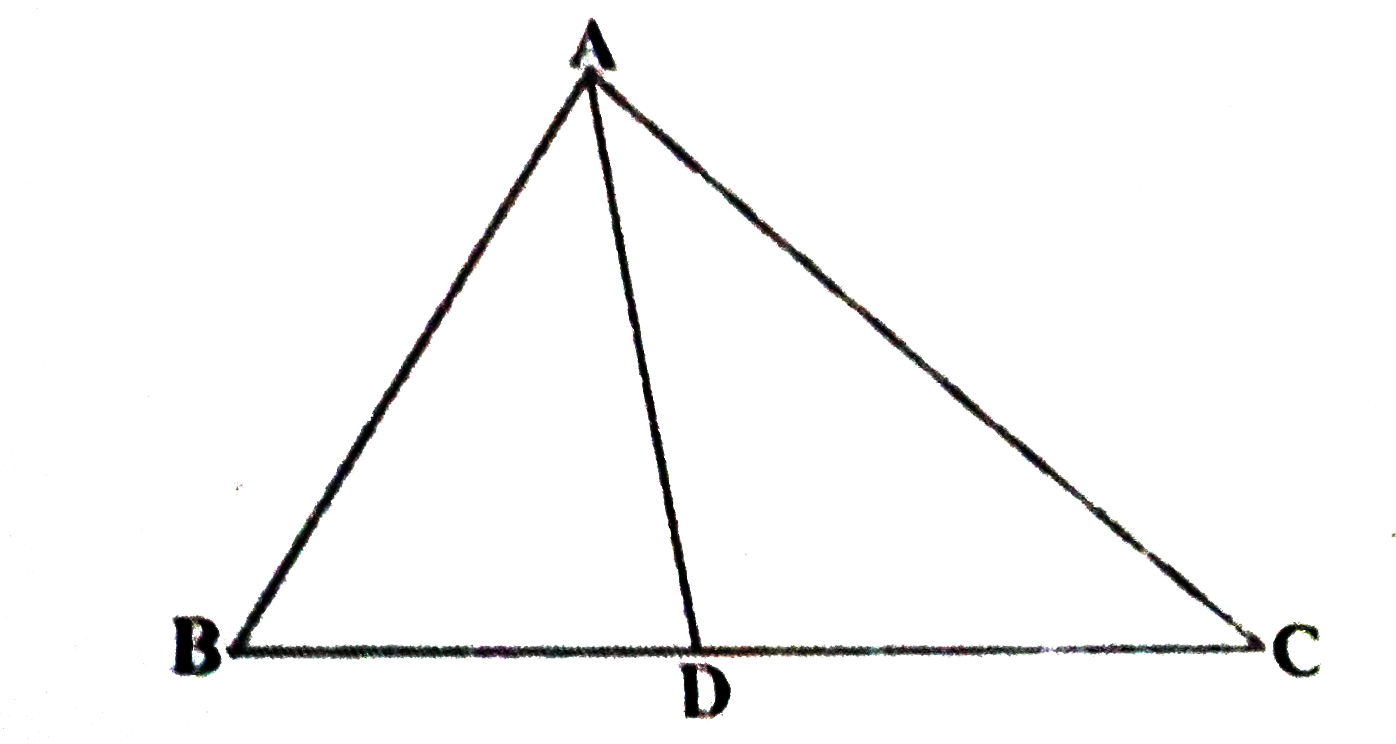D is a point on side BC of ΔABCsuch that AD = AC(see Fig. 7.47).Show that AB > AD.
To prove that AB>AD in triangle ABC where D is a point on side BC such that AD=AC, we can follow these steps:
Step 1: Understand the Given Information
We are given that AD=AC. This means that the lengths of segments AD and AC are equal.
Hint: Identify the properties of triangles and the implications of equal lengths.
Step 2: Use the Isosceles Triangle Property
Since AD=AC, triangle ACD is an isosceles triangle. By the properties of isosceles triangles, the angles opposite the equal sides are also equal. Therefore, we can write:
∠ACD=∠ADC
Hint: Recall that in an isosceles triangle, the angles opposite to equal sides are equal.
Step 3: Identify the Exterior Angle
Now, consider angle ADC. This angle is an exterior angle for triangle ABD. According to the exterior angle theorem, an exterior angle is greater than either of the interior opposite angles. Thus, we can say:
∠ADC>∠ABD
Hint: Remember the exterior angle theorem which states that an exterior angle is greater than the two opposite interior angles.
Step 4: Relate Angles to Sides
Since ∠ADC>∠ABD, we can apply the property that states if one angle is greater than another, the side opposite to the greater angle is also longer. Therefore, we have:
AB>AD
Hint: Use the property that states sides opposite to greater angles are longer.
Step 5: Conclusion
We have shown that AB>AD based on the relationships established through the angles in triangle ACD and the exterior angle theorem.
Final Statement: Hence, we conclude that AB>AD.
We are given that AD=AC. This means that the lengths of segments AD and AC are equal.
Since AD=AC, triangle ACD is an isosceles triangle. By the properties of isosceles triangles, the angles opposite the equal sides are also equal. Therefore, we can write:
∠ACD=∠ADC
Now, consider angle ADC. This angle is an exterior angle for triangle ABD. According to the exterior angle theorem, an exterior angle is greater than either of the interior opposite angles. Thus, we can say:
∠ADC>∠ABD
Since ∠ADC>∠ABD, we can apply the property that states if one angle is greater than another, the side opposite to the greater angle is also longer. Therefore, we have:
AB>AD
We have shown that AB>AD based on the relationships established through the angles in triangle ACD and the exterior angle theorem.
Topper's Solved these Questions
- TRIANGLESBOOK - NCERT ENGLISHCHAPTER - TRIANGLESEXERCISE - EXERCISE 7.5
4 Videos
- TRIANGLESBOOK - NCERT ENGLISHCHAPTER - TRIANGLESEXERCISE - EXERCISE 7.2
8 Videos
- TRIANGLESBOOK - NCERT ENGLISHCHAPTER - TRIANGLESEXERCISE - EXERCISE 7.1
8 Videos
- SURFACE AREAS AND VOLUMESBOOK - NCERT ENGLISHCHAPTER - SURFACE AREAS AND VOLUMESEXERCISE - Exercise 13.9
3 Videos
Similar Questions
D is a point on the side BC of a triangle ABC such that ∠ADC=∠BAC. Show that CA2=CB.CD.
View SolutionIn figure D is a point on side BC of a ΔABCsuch that BDCD=ABAC. Prove that AD is the bisector of ∠BAC.

View SolutionD is a point on the side BC of ABC such that ∠ADC=∠BAC . Prove that CACD=CBCA or, CA2=CB×CD .
View SolutionE and F are respectively the mid-points of equal sides AB and AC of ΔABC(see Fig. 7.28). Show that BF = C E.
View SolutionABC is an isosceles triangle in which AB= AC . Side BA is produced to D such that AD = AB (see Fig. 7.34). Show that ∠BCD is a right angle.
View SolutionIn an isosceles triangle ABC with AB=AC, D and E are points on BCsuch that BE=CD(see Fig. 7.29). Show that AD=AE
View SolutionA point D is on the side BC of an equilateral triangle ABC such that DC=14 BC . Prove that AD2=13 CD2 .
View SolutionIf D is a point on the side AB of △ABC such that AD:DB=3:2 and E is a point on BC such that DE∣∣AC . Find the ratio of areas of △ABC and △BDE .
View SolutionA point D is taken on the side BC of a ABC such that BD=2dC. Prove that ar(ABD)=2ar(ADC).
View SolutionD and E are points on sides AB and AC respectively of ΔABCsuch thatar (DBC) = ar (EBC). Prove that DE ∣∣ BC.
View Solution
